Posted on October 11th, 2010 by ASEE
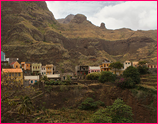 In this lesson from the Peace Corps, students in grades 4-12 learn how harvesting water from fog can help people who have limited access to fresh water. They study the water challenges in Cape Verde, and the technology and benefits of fog water collectors. They then build and evaluate a own working model.
In this lesson from the Peace Corps, students in grades 4-12 learn how harvesting water from fog can help people who have limited access to fresh water. They study the water challenges in Cape Verde, and the technology and benefits of fog water collectors. They then build and evaluate a own working model.
Read More
Filed under: Grades 6-8, Grades 9-12, Grades K-5, Lesson Plans | 1 Comment »
Tags: Clean Water, Environmental Engineering, Grades 4-12, Peace Corps Cape Verde, Water
Posted on October 11th, 2010 by ASEE
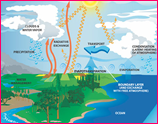 In this lesson from the Peace Corps, students in grades 3-8 learn how to generate fresh water from seawater, using the power of the sun. They study the water challenges in Cape Verde and the advantages of distilling water through a simple solar sill. They then build and evaluate a working model.
In this lesson from the Peace Corps, students in grades 3-8 learn how to generate fresh water from seawater, using the power of the sun. They study the water challenges in Cape Verde and the advantages of distilling water through a simple solar sill. They then build and evaluate a working model.
Read More
Filed under: Grades 6-8, Grades K-5, Lesson Plans | 1 Comment »
Tags: Clean Water, Environmental Engineering, Peace Corps Cape Verde, Water management
Posted on September 27th, 2010 by ASEE
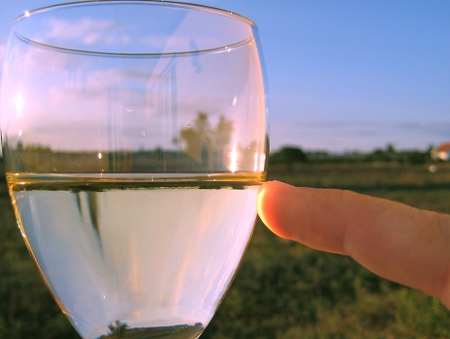 In this lesson, students in grades 3-9 learn how lenses gather and focus light and mirrors bounce light. They conduct experiments with water and mirrors to gain a greater understanding of the basic workings of telescopes.
In this lesson, students in grades 3-9 learn how lenses gather and focus light and mirrors bounce light. They conduct experiments with water and mirrors to gain a greater understanding of the basic workings of telescopes.
Read More
Filed under: Grades 6-8, Grades K-5, Lesson Plans | Comments Off on Lesson: How Telescopes Work
Tags: Lesson Plan, Physics, Telescope
Posted on August 16th, 2010 by ASEE
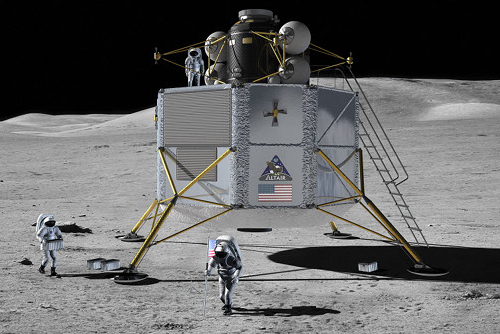
In this lesson, students assume the role of NASA aerospace engineers, following the engineering design process to learn the steps for designing, creating, and improving equipment. They design and build a shock-absorbing system that will protect two “astronauts” when they land, and come to understand some of the challenges of lunar landings.
Read More
Filed under: Grades 6-8, Grades K-5, Lesson Plans | 3 Comments »
Tags: Aerospace, Aerospace Engineering, Engineering Design Process, Grades 3-8, NASA
Posted on June 21st, 2010 by ASEE
 If you’re fortunate enough to live near a beach or sandy banks or dunes, this sand-castle construction lesson from the Great Sand Dunes National Park and Preserve will both instruct and entertain, helping your students understand the cohesive force of water tension and the adhesive force of capillary action.
If you’re fortunate enough to live near a beach or sandy banks or dunes, this sand-castle construction lesson from the Great Sand Dunes National Park and Preserve will both instruct and entertain, helping your students understand the cohesive force of water tension and the adhesive force of capillary action.
Read More
Filed under: Grades 6-8, Grades 6-8, Grades K-5, Grades K-5, K-12 Outreach Programs, Lesson Plans | 1 Comment »
Tags: capillary action, Chemical Engineering, erosion, Grades 3-8, Great Sand Dunes National Park, Lesson Plan, sand and water, Water
Posted on June 7th, 2010 by ASEE
 This simple lesson from The Works Museum in Minnesota consists of two activities that introduce elementary school students to the engineering design process. Students first work through a chart detailing the steps of the design process and then use the steps to consider ways to solve one of three problems: rescuing a trapped kitten, devising a way to water plants while on vacation, and rigging up a remote light switch.
This simple lesson from The Works Museum in Minnesota consists of two activities that introduce elementary school students to the engineering design process. Students first work through a chart detailing the steps of the design process and then use the steps to consider ways to solve one of three problems: rescuing a trapped kitten, devising a way to water plants while on vacation, and rigging up a remote light switch.
Read More
Filed under: Class Activities, Grades 6-8, Grades 6-8, Grades K-5, Grades K-5, Lesson Plans | 1 Comment »
Tags: Engineering Design Process, Grades 4 - 8, The Works museum
Posted on May 10th, 2010 by ASEE
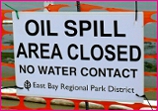 In this lesson, students in grades 3-12 work in teams to analyze an “oil spill” in the classroom, then design, build, and test a system to first contain, and then remove the oil from the water. Students select from everyday items to build their oil containment and clean-up systems, evaluate the effectiveness of their solution and those of other teams, and present their findings to the class.
In this lesson, students in grades 3-12 work in teams to analyze an “oil spill” in the classroom, then design, build, and test a system to first contain, and then remove the oil from the water. Students select from everyday items to build their oil containment and clean-up systems, evaluate the effectiveness of their solution and those of other teams, and present their findings to the class.
Read More
Filed under: Grades 6-8, Grades 9-12, Grades K-5, Lesson Plans | 3 Comments »
Tags: Energy and Environmental Technology, Environmental Engineering, Environmental science, Grades 3-12, Ocean
Posted on May 3rd, 2010 by ASEE
 Using a plasma ball or lightning globe, students in grades 3-5 test various objects to see if they pull the electric current generated by the globe to them. Students then explore how the globe excited electrons inside the fluorescent bulbs to make them light.
Using a plasma ball or lightning globe, students in grades 3-5 test various objects to see if they pull the electric current generated by the globe to them. Students then explore how the globe excited electrons inside the fluorescent bulbs to make them light.
Read More
Filed under: Class Activities, Grades K-5, Grades K-5, Lesson Plans | Comments Off on Lesson Plan: Plasma Globes and Electricity
Tags: Class Activities, Curriculum, Grades 3-5, Lesson Plan, Plasma Physics
Posted on April 19th, 2010 by Jaimie Schock
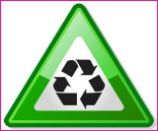 In this activity, students in grades 3-5 collect, categorize, weigh and analyze classroom solid waste. The class collects waste for a week, and then student groups spend a day sorting and analyzing the garbage with respect to recyclable and non-recyclable items. Students will discuss ways that engineers have helped to reduce solid waste.
In this activity, students in grades 3-5 collect, categorize, weigh and analyze classroom solid waste. The class collects waste for a week, and then student groups spend a day sorting and analyzing the garbage with respect to recyclable and non-recyclable items. Students will discuss ways that engineers have helped to reduce solid waste.
Read More
Filed under: Grades K-5, Lesson Plans | 1 Comment »
Tags: Environmental Engineering, Environmental science, Grades 3-5, Lesson Plan, Recycling, Waste management
 In this lesson from the Peace Corps, students in grades 4-12 learn how harvesting water from fog can help people who have limited access to fresh water. They study the water challenges in Cape Verde, and the technology and benefits of fog water collectors. They then build and evaluate a own working model.
In this lesson from the Peace Corps, students in grades 4-12 learn how harvesting water from fog can help people who have limited access to fresh water. They study the water challenges in Cape Verde, and the technology and benefits of fog water collectors. They then build and evaluate a own working model.








 In this lesson from the Peace Corps, students in grades 3-8 learn how to generate fresh water from seawater, using the power of the sun. They study the water challenges in Cape Verde and the advantages of distilling water through a simple solar sill. They then build and evaluate a working model.
In this lesson from the Peace Corps, students in grades 3-8 learn how to generate fresh water from seawater, using the power of the sun. They study the water challenges in Cape Verde and the advantages of distilling water through a simple solar sill. They then build and evaluate a working model. In this lesson, students in grades 3-9 learn how lenses gather and focus light and mirrors bounce light. They conduct experiments with water and mirrors to gain a greater understanding of the basic workings of telescopes.
In this lesson, students in grades 3-9 learn how lenses gather and focus light and mirrors bounce light. They conduct experiments with water and mirrors to gain a greater understanding of the basic workings of telescopes.
 If you’re fortunate enough to live near a beach or sandy banks or dunes, this sand-castle construction lesson from the Great Sand Dunes National Park and Preserve will both instruct and entertain, helping your students understand the cohesive force of water tension and the adhesive force of capillary action.
If you’re fortunate enough to live near a beach or sandy banks or dunes, this sand-castle construction lesson from the Great Sand Dunes National Park and Preserve will both instruct and entertain, helping your students understand the cohesive force of water tension and the adhesive force of capillary action. This simple lesson from The Works Museum in Minnesota consists of two activities that introduce elementary school students to the engineering design process. Students first work through a chart detailing the steps of the design process and then use the steps to consider ways to solve one of three problems: rescuing a trapped kitten, devising a way to water plants while on vacation, and rigging up a remote light switch.
This simple lesson from The Works Museum in Minnesota consists of two activities that introduce elementary school students to the engineering design process. Students first work through a chart detailing the steps of the design process and then use the steps to consider ways to solve one of three problems: rescuing a trapped kitten, devising a way to water plants while on vacation, and rigging up a remote light switch. In this lesson, students in grades 3-12 work in teams to analyze an “oil spill” in the classroom, then design, build, and test a system to first contain, and then remove the oil from the water. Students select from everyday items to build their oil containment and clean-up systems, evaluate the effectiveness of their solution and those of other teams, and present their findings to the class.
In this lesson, students in grades 3-12 work in teams to analyze an “oil spill” in the classroom, then design, build, and test a system to first contain, and then remove the oil from the water. Students select from everyday items to build their oil containment and clean-up systems, evaluate the effectiveness of their solution and those of other teams, and present their findings to the class. Using a plasma ball or lightning globe, students in grades 3-5 test various objects to see if they pull the electric current generated by the globe to them. Students then explore how the globe excited electrons inside the fluorescent bulbs to make them light.
Using a plasma ball or lightning globe, students in grades 3-5 test various objects to see if they pull the electric current generated by the globe to them. Students then explore how the globe excited electrons inside the fluorescent bulbs to make them light. In this activity, students in grades 3-5 collect, categorize, weigh and analyze classroom solid waste. The class collects waste for a week, and then student groups spend a day sorting and analyzing the garbage with respect to recyclable and non-recyclable items. Students will discuss ways that engineers have helped to reduce solid waste.
In this activity, students in grades 3-5 collect, categorize, weigh and analyze classroom solid waste. The class collects waste for a week, and then student groups spend a day sorting and analyzing the garbage with respect to recyclable and non-recyclable items. Students will discuss ways that engineers have helped to reduce solid waste.